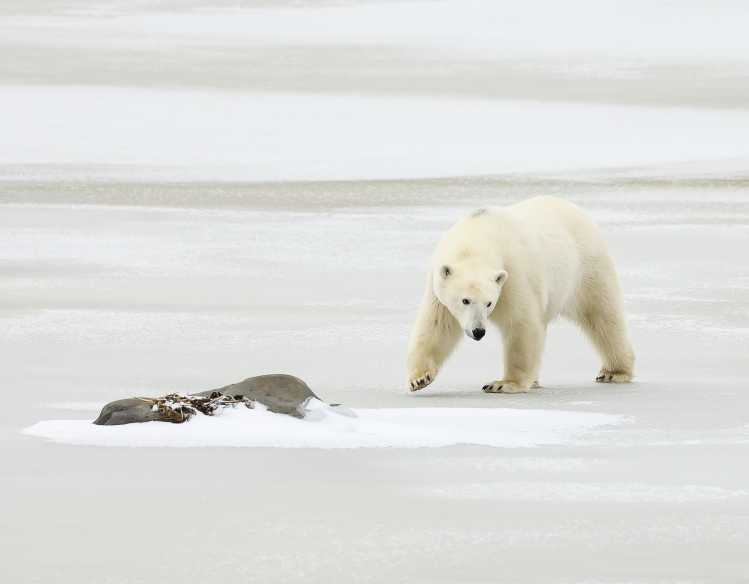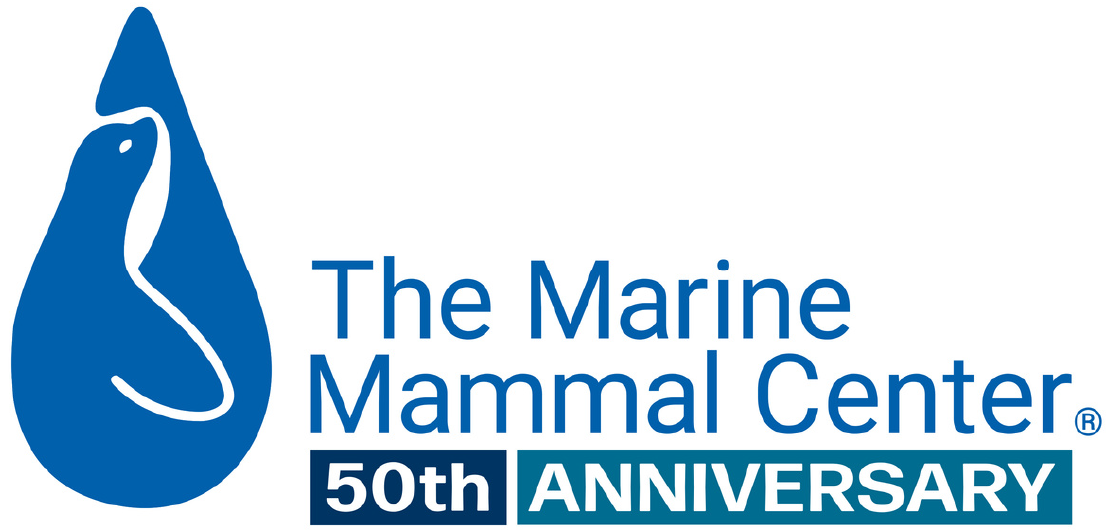Conservation in Focus
About the Show
The Marine Mammal Center is proud to present Conservation in Focus, a photography exhibition unveiling scenes of marine mammals—both in the wild and at the world’s largest marine mammal hospital.
Take a step behind the lens of esteemed photographer Bill Hunnewell for an immersive and unique look at marine mammal rehabilitation and the challenges these animals face in the wild.
From the impact of threats like climate change to uplifting stories of second chances, these moving images are bound to inspire actions that protect marine mammals and our shared ocean environment.
Battling the impacts of climate change, a polar bear waits for ice to set on the Hudson Bay in Canada before it can begin hunting ringed seals. As Arctic waters warm and sea ice continues to melt earlier in the year, the polar bear population in the Hudson Bay that depends on sea ice to survive has shrunk by 20 percent in the last two decades.


California sea lion patient Tchotchke enjoys a meal while receiving life-saving care at The Marine Mammal Center’s Sausalito hospital.
Two male elephant seals at Año Nuevo State Park in California compete for female seals. Nature is not always pretty; while fatalities are rare in these shows of competition, severe injuries do occur.


A southern elephant seal sleeps in the sand on South Georgia, an island about 1,000 miles east of the southern Patagonian coast. Southern elephant seals are the largest of all seal species, with males reaching up to 20 feet in length and weighing 8,800 pounds.
Northern elephant seal patients Galway, Scallywag and Heymag take a swim in the pool while rehabilitating at The Marine Mammal Center’s Sausalito hospital. The wooden blocks on their heads, called hat tags, help staff and volunteers identify individual patients.


Northern fur seal patient Hermulligan balances on the edge of a rehabilitation pool while receiving medical treatment at The Marine Mammal Center’s Sausalito hospital.
Northern fur seal patient Lowell dips into a pool at The Marine Mammal Center’s Sausalito hospital.


After a successful cooperative hunting event using a strategy called bubble-net feeding, a humpback whale off the coast of Alaska breaches out of the water. To sustain themselves before migrating to their Hawaiian breeding grounds in the winter, humpback whales depend on the nourishment of Alaskan herring during the summer.
In a hands-on learning environment with The Marine Mammal Center’s Teaching Hospital, veterinary and animal care professionals from around the world receive critical training while operating on a marine mammal patient.


Harbor seals take refuge on floating ice in Alaska. Not only does sea ice offer protection from predators, but it provides a safe place for seals to give birth and rest. Due to climate change and receding glaciers, sea ice is rapidly disappearing for harbor seals and other animals that depend on it to survive.
On the island of South Georgia, southern elephant seals share the beach with king penguins.


Bill’s favorite harbor seal patient, Rebel Princess, bobs in the water while rehabilitating at The Marine Mammal Center’s Sausalito hospital. Rebel Princess was found alone on a beach at just a few days old. After two months of care, he was strong enough to survive on his own and was released back to the wild.
In a celebratory event with what almost looks like a goodbye kiss, four California sea lions are released back to the ocean in Point Reyes, California, after recovering at The Marine Mammal Center.


Southern sea otter patient Yankee Doodle feeds in the pool at The Marine Mammal Center’s Sausalito hospital. After being hunted to the brink of extinction for their luxurious fur, southern sea otters are slowly recovering, and the population is listed as a threatened species.
A blood-orange sky illuminates the statue of elephant seal Elmo in the courtyard at The Marine Mammal Center’s Sausalito visitor center. Caused by a convergence of wildfire smoke and fog, the eerie orange glow blanketed the Bay Area for much of the day on September 9, 2020.


After successfully rehabilitating at The Marine Mammal Center’s Sausalito hospital, two harbor seals are released at Dillon Beach, California, with a second chance at life in the wild.
Four young California sea lions return to the wild after rehabilitating at The Marine Mammal Center’s Sausalito hospital.

About the Photographer
Bill Hunnewell is an award-winning wildlife photographer passionate about capturing images that illuminate and expose the critical need for action in the name of ocean conservation.
Behind the camera from a young age, Bill learned the basics of photography from his father using a single-lens reflex camera and light meter. He has since trained with several National Geographic photographers, including Flip Nicklin, who is known for his whale photography.
Retirement from corporate life allowed Bill to dive deeper into his passion for photography and travel the world to understand the conservation issues facing marine mammals and the environment. To date, he has taken photos on every continent except Australia.
A long-time animal care volunteer at the Center, Bill provides us with a unique perspective of the Center’s work and all that happens behind-the-scenes, from admit exams to daily feeds to patient releases.
Bill’s photographs of the Center’s work have been featured in renowned publications such as National Geographic, Forbes, The New York Times, Los Angeles Times, People Magazine, Smithsonian Magazine and more.







